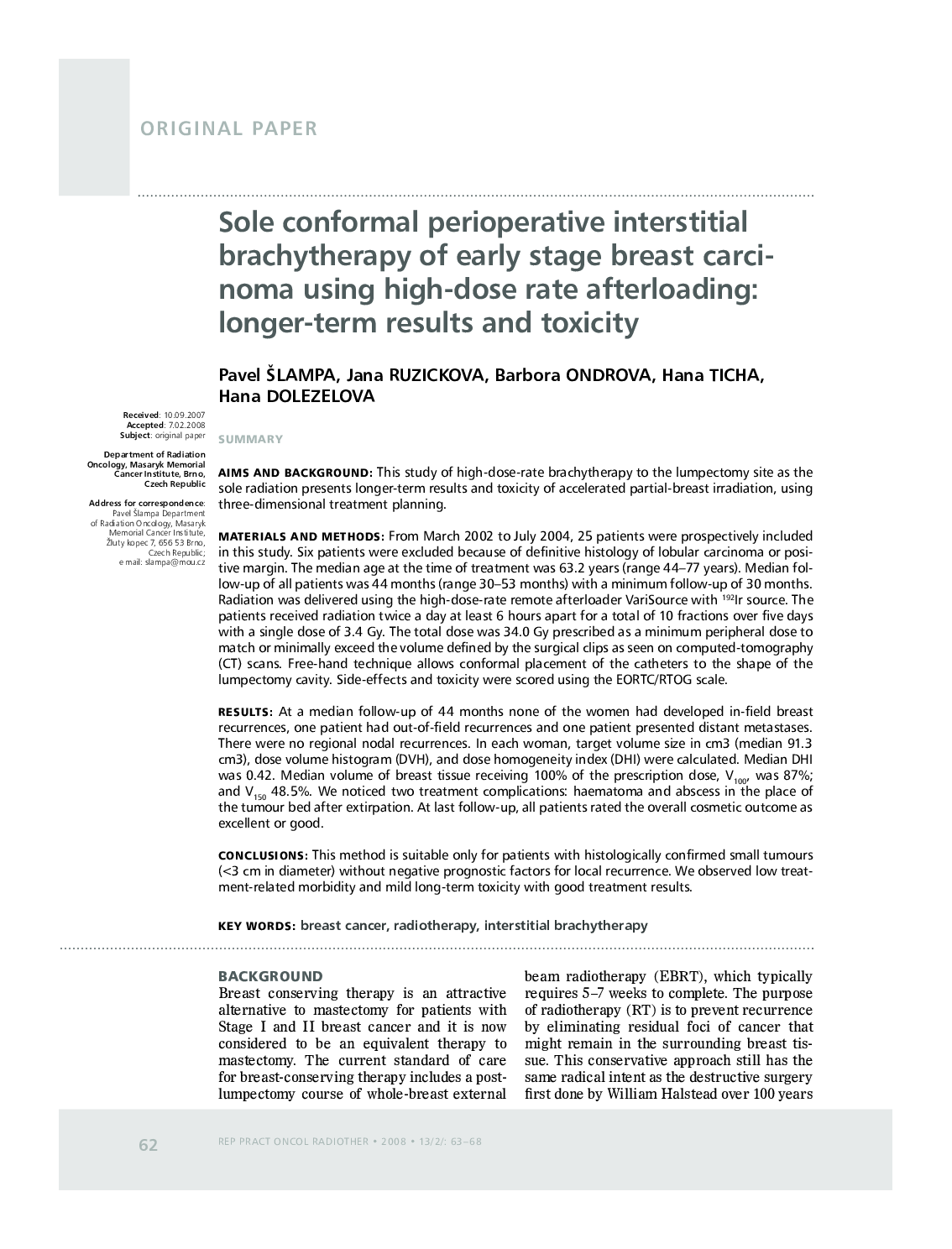| کد مقاله | کد نشریه | سال انتشار | مقاله انگلیسی | نسخه تمام متن |
|---|---|---|---|---|
| 1855777 | 1529450 | 2008 | 7 صفحه PDF | دانلود رایگان |

SummaryAims and BackgroundThis study of high-dose-rate brachytherapy to the lumpectomy site as the sole radiation presents longer-term results and toxicity of accelerated partial-breast irradiation, using three-dimensional treatment planning.Materials and MethodsFrom March 2002 to July 2004, 25 patients were prospectively included in this study. Six patients were excluded because of definitive histology of lobular carcinoma or positive margin. The median age at the time of treatment was 63.2 years (range 44–77 years). Median follow-up of all patients was 44 months (range 30–53 months) with a minimum follow-up of 30 months. Radiation was delivered using the high-dose-rate remote afterloader VariSource with 192Ir source. The patients received radiation twice a day at least 6 hours apart for a total of 10 fractions over five days with a single dose of 3.4 Gy. The total dose was 34.0 Gy prescribed as a minimum peripheral dose to match or minimally exceed the volume defined by the surgical clips as seen on computed-tomography (CT) scans. Free-hand technique allows conformal placement of the catheters to the shape of the lumpectomy cavity. Side-effects and toxicity were scored using the EORTC/RTOG scale.ResultsAt a median follow-up of 44 months none of the women had developed in-field breast recurrences, one patient had out-of-field recurrences and one patient presented distant metastases. There were no regional nodal recurrences. In each woman, target volume size in cm3 (median 91.3 cm3), dose volume histogram (DVH), and dose homogeneity index (DHI) were calculated. Median DHI was 0.42. Median volume of breast tissue receiving 100% of the prescription dose, V100, was 87%; and V150 48.5%. We noticed two treatment complications: haematoma and abscess in the place of the tumour bed after extirpation. At last follow-up, all patients rated the overall cosmetic outcome as excellent or good.ConclusionsThis method is suitable only for patients with histologically confirmed small tumours (<3 cm in diameter) without negative prognostic factors for local recurrence. We observed low treatment-related morbidity and mild long-term toxicity with good treatment results.
Journal: Reports of Practical Oncology & Radiotherapy - Volume 13, Issue 2, March–April 2008, Pages 62-68